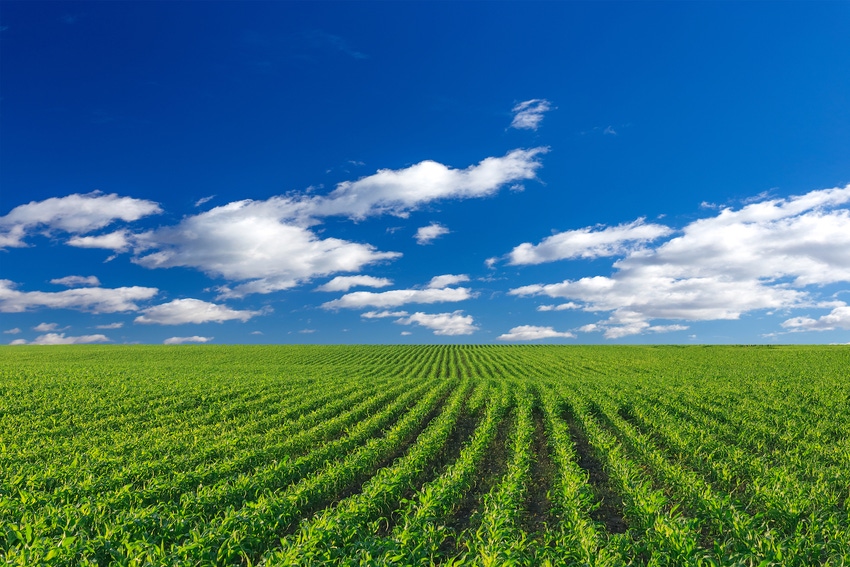
Ahead of today’s highly anticipated acreage and quarterly grain stocks report from USDA, traders were bracing for the worst, initiating a round of technical selling that left corn, soybean and wheat futures with moderate losses earlier today.
But once the actual numbers came in, the markets shifted significantly into the green after traders digested data that showed lower-than-expected corn and soybean acres, with overall stocks numbers also lending additional support today. Corn and soybeans surged more than 5% higher within 20 minutes of the new numbers, with most wheat contracts up 2.5% to 3%.
Acreage numbers
First, a look at the latest acreage data.
USDA’s latest estimates for 2021 corn acres is now 92.7 million acres, moving up from its March forecast of 91.144 million acres and 2% above 2020 totals. Still, that was more than a million acres lower than the average trade guess of 93.787 million acres.
Among the 48 states that USDA provides estimates for, the agency marks 28 of them unchanged or seeing increases from a year ago. Expected harvested area also tilted 2% higher from a year ago, at 84.5 million acres.
Soybean plantings this year are now estimated at 87.6 million acres, which is 5% higher than 2020 totals but identical to USDA’s projections from March. As with corn, analysts had predicted a moderately higher number – the average trade guess was for 88.955 million acres.
Compared with last year, USDA expects 28 of the 29 estimating states will see steady to increased acres.
USDA’s assessment of all-wheat acres provided the most deviation from analyst estimates. The average trade guess assumed the agency would lower its March projection of 46.358 million acres down to around 45.940 million acres. In contrast, USDA bumped those estimates a bit higher to reach 46.7 million acres, which is 5% higher than 2020 totals.
Wheat’s acreage breakdown currently looks like this:
Winter wheat: 33.7 million acres (up 11% from 2020)
Hard red winter: 23.6 million acres
Soft red winter: 6.6 million acres
White winter: 3.5 million acres
Spring wheat: 11.6 million acres (down 5% from 2020)
Durum wheat: 1.48 million acres (down 12% from 2020)
USDA also reports on cotton plantings, which fell 3% year-over-year to 11.7 million acres. Upland cotton acres are only down 3% to 11.6 million acres, while Pima cotton acres fell 30% year-over-year to just 142,000 acres.
Grain stocks shift lower
USDA also released its quarterly grain stocks data Wednesday morning. Here are some highlights:
For corn, stocks in all positions were at 4.11 billion bushels as of June 1, 2021, marking a year-over-year decrease of 18% and nearly identical to the average trade guess of 4.144 billion bushels.
That volume was divided between off-farm stocks of 2.37 billion bushels (up 11% from last year) and on-farm stocks of 1.74 billion bushels (down 39% from last year). Disappearance between March and May of this year was 3.58 billion bushels, versus 2.95 bushels during the same period a year ago.
For soybeans, stocks in all positions were at 767 million bushels, plummeting 44% lower year-over-year and 20 million bushels lower than the average trade guess.
The bulk of that volume is currently being stored off-farm, with 547 million bushels (down 27% from last year). On-farm stocks spilled 65% lower year-over-year to just 220 million bushels. Disappearance between March and May totaled 795 million bushels, sliding 9% lower compared to the same period in 2020.
All wheat stocks fell 18% from a year ago to 844 million bushels, which was also 15 million bushels below the average trade guess of 859 million bushels.
That volume is divided between on-farm stocks of 142 million bushels (down 38% from last year) and off-farm stocks of 702 million bushels (down 12% year over year). Disappearance reached 467 million bushels, which was 21% higher year over year.
To see these reports in their entirety, click here and here, and be sure to return to www.FarmFutures.com later this week for more exclusive market news and analysis on these reports and more.
About the Author(s)
You May Also Like






